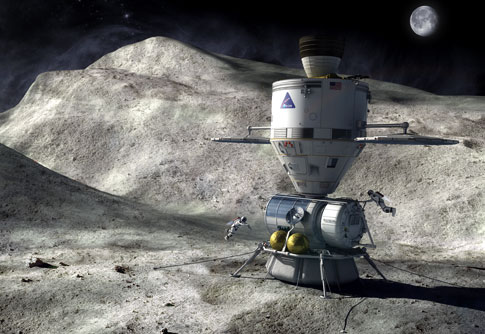[/caption]The acceleration due to gravity is the acceleration of a body due to the influence of the pull of gravity alone, usually denoted by ‘g’. This value varies from one celestial body to another. For example, the acceleration due to gravity would be different on the Moon as compared to the one here on Earth. Similarly, you would have different values for both Jupiter and Pluto.
Since acceleration is a vector quantity, it must possess both a magnitude and a direction. The values we were referring to earlier pertained to the magnitude. As for the direction, in all instances, it should be directed to the center of the celestial body. Now, since these celestial bodies are rather large relative to the size of the observer, in this case being you and I, the direction is taken as downward.
Direction of g
Why downward? Well, as stated earlier, g is the acceleration of a body if we consider only the pulling force of the gravitational field. Now, since the acceleration of a body always takes the direction of the net force acting on that body, and since the only force we are considering is that of gravity, then this acceleration should take the direction of gravity, i.e., downward.
Don’t worry. The direction of g is mostly important only in the mathematical solutions of physics problems. What you should be more concerned with is the magnitude of g. Although this magnitude varies from one celestial body to another, you might want to know what the value of g is here on Earth.
Magnitude of g
The average value of g on the surface of the Earth is around 9.8 m/s2. Average? So there are other possible values? That’s right. The value of g becomes larger as the object gets nearer to the Earth’s core. So, you’d have a slightly larger g at sea level compared to what you’d have at the peak of say, the Himalayas.
Furthermore, since the Earth is not a perfect sphere but, rather, an oblate spheroid, i.e., bulging at the equator and flat at the poles, then you would have greater g’s at the poles than at the equator.
To end, let me just elaborate more on what we mean by 9.8 m/s2 as some people confuse this with speed. When we say that an object falling freely (under the influence of gravity alone) accelerates at 9.8 m/s2, we simply mean that its speed is increasing by 9.8 m/s every second. Hence, after 1 second of falling, its speed would be 9.8 m/s. After another 2 seconds of falling, it would then be 19.6 m/s and so on.
We have some related articles here that may interest you:
There’s more about it at NASA. Here are a couple of sources there:
Here are two episodes at Astronomy Cast that you might want to check out as well:
Decelerating Black Holes, Earth-Sun Tidal Lock, and the Crushing Gravity of Dark Matter
Gravity
Sources:
Wikipedia
The Physics Classroom
Haverford College

